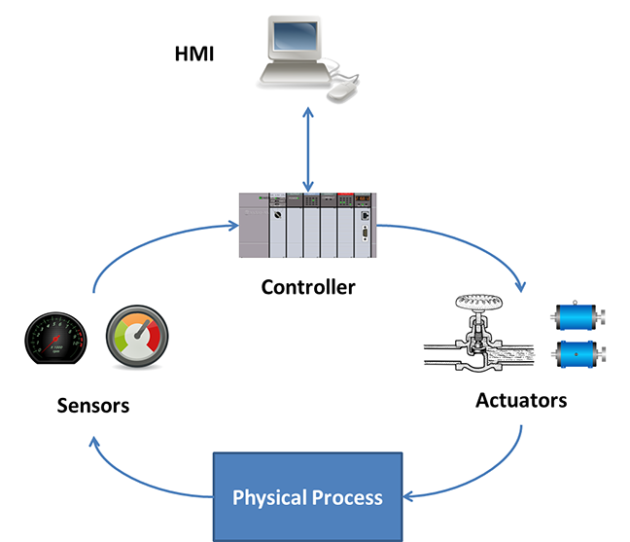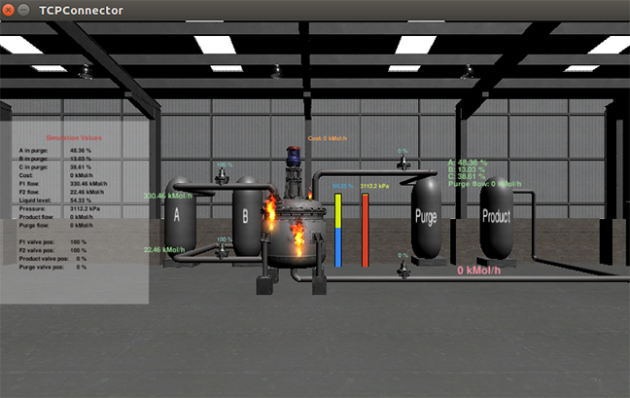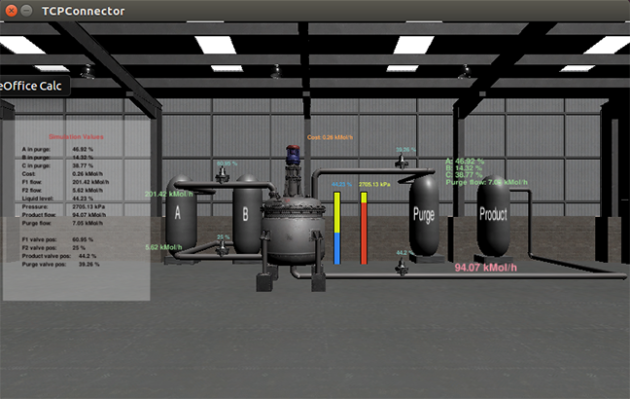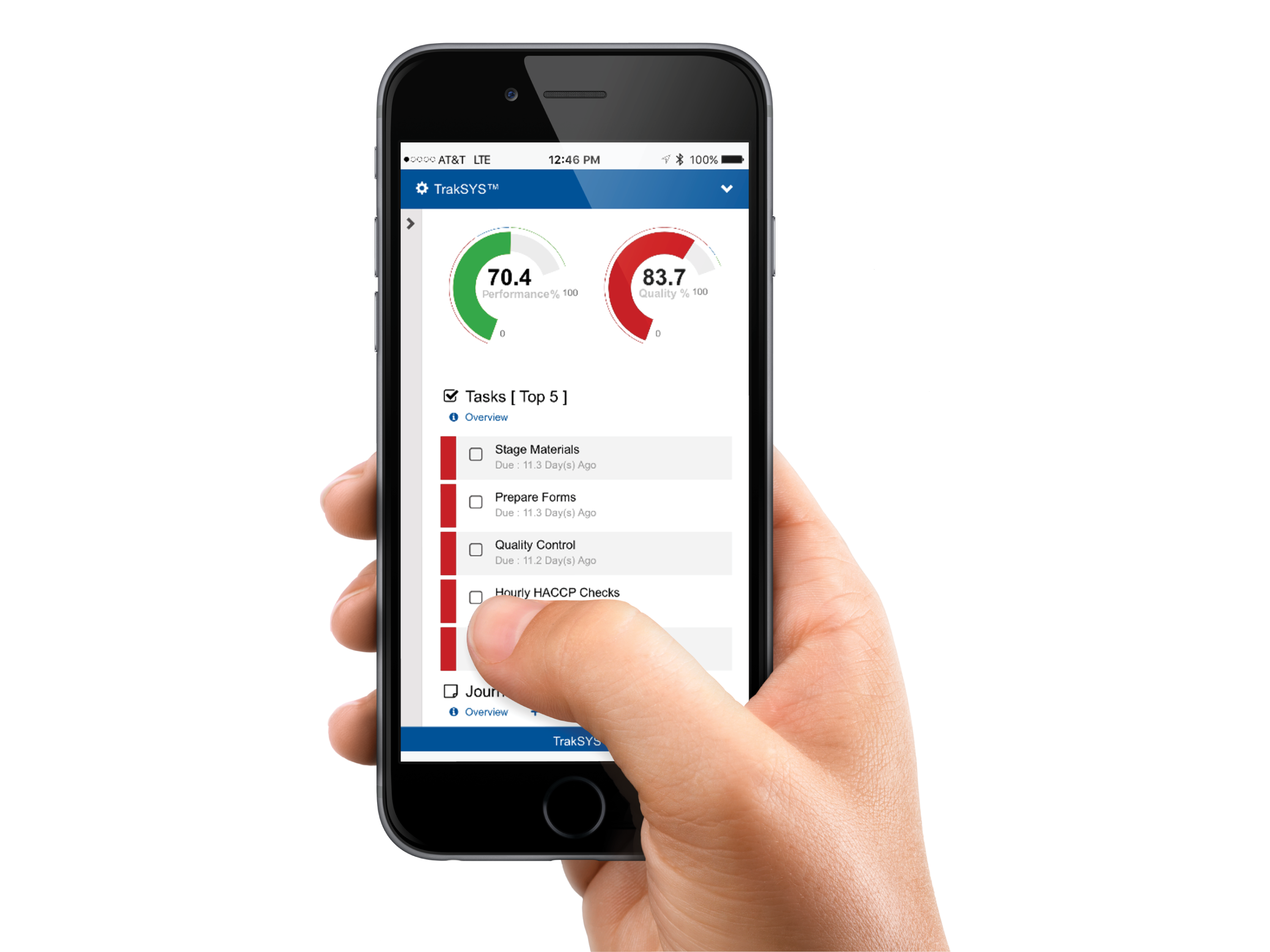
by Gary Mintchell | Feb 20, 2019 | Automation, Operator Interface, Workforce
My thesis holds that the proper development and deployment of technology empowers workers to better perform their tasks. The keywords from my interview with Webalo at the ARC Industry Forum in Orlando were “empower” and “tool”.
The conversations centered on the company’s launch of Webalo 5.0, the latest version of its no-code, frontline workforce app generation platform. Its User First approach automatically generates and personalizes apps from enterprise data sources, such those from IBM, Microsoft, Oracle, and SAP as well as industrial data sources such as AVEVA, GE, Rockwell, and Siemens.
Webalo enables frontline workers through real-time access to actionable analytics, alerts, and notifications, as well as desktop and native mobile bi-directional interaction through intelligently managed workflows.
“Though the overwhelming majority of companies understand that frontline worker autonomy would boost their competitiveness, less than 30% of companies have been able to launch frontline workforce digital transformation projects because of the time, cost and complexity of traditional software development approaches,”said Webalo CEO Peter Price. “Webalo 5.0 automates the digital transformation of the frontline workforce at a fraction of the time, cost and effort of these traditional approaches, providing frontline workerswithreal-time, actionable,personalizedvisibility into their daily tasks and activities.”
Webalo 5.0’s specific features include:
- Tighter integration with industrial data sources such as Historian databases and Manufacturing Execution Systems(MES).
- Powerful “Connect & Deploy”–a no-code app delivery capabilitythat providesend users with the ability to easily generate new applications in an ad hoc, drag and drop manner, directly from their Webalo Desktop Client.
- Actionable visualizations are now defined at the individual user level, providing frontline workers with the flexibility to create their own custom views of apps and share them with their co-workers.
- Enhanced workflow management empowersfrontline workers in a more intelligent way,with multiple visualizations of the same task using different parameters.
- Automatically-generated tasks and actionable visualizations to operate over MES asset hierarchies and Historian tags that makes the data more actionable and visible to all stakeholders.
- Contextualized dashboards that provide embedded asset hierarchy, selectable timeframes and custom user inputs.
- User-managed editors to create and modify trend charts,with out-of-the-box Historian services, allowing frontline workers to modify the way they request and display Historian tag values by selecting a Historian sampling mode from a drop-down menu, and then configuring the options that appear for that node.
- PDF report generation providing a new way of sharing data interactively with co-workers.Webalo 5.0 is now available.

by Gary Mintchell | Sep 19, 2018 | Automation, Industrial Computers, Internet of Things, Manufacturing IT, News, Operations Management, Operator Interface, Technology
IMTS has been a huge show for many years. As you might expect from a trade show, the theme is broad. Exhibitors are a diverse lot. Things I saw indicating a new wave of technologies including machines designed to work with humans (so-called “cobots”) and various aspects of Industrial Internet of Things. Following are a few specifics.
Formerly the International Machine Tool Show and now the International Manufacturing Technology Show, the South Hall of Chicago’s McCormick Place is still filled with huge machining centers. The North Hall was packed with robotics, components, and other automation products. Much of this flows over to the East Hall where several aisles were devoted to Hannover Messe automation companies—my sweet spot. Even the West Hall was packed.
Beckhoff proclaimed, “Solve the IoT hardware, software and networking puzzle.”
The company introduced ultra-compact Industrial PCs (IPCs). These IPCs are Microsoft Azure Certified and can work just as easily with other major cloud platforms such as Amazon Web Services (AWS) and SAP HANA.
Significant updates will span three key areas of the TwinCAT software suite: new HTML5-enabled TwinCAT HMI for industrial displays and mobile devices, important data processing expansions in the TwinCAT Analytics offering, and TwinCAT 3 Motion Designer, which adds a deep set of valuable tools to commission entire motor, drive and mechanical systems in software. Motion Designer can be integrated into the standard TwinCAT 3 software platform or it can be used as a stand-alone motion system engineering tool.
EK1000 EtherCAT TSN Coupler expands the industrial Ethernet capabilities of the EtherCAT I/O system to utilize TSN (Time-Sensitive Networking) technology. The EK1000 enables communication among high-performance EtherCAT segments with remote EtherCAT controllers via heterogeneous Ethernet networks.
Ideagen plc, the UK-based software firm, announced the acquisition of American quality inspection software provider, InspectionXpert. Based in Raleigh, North Carolina, InspectionXpert currently generates $2.8 million in revenue and will bring more than 1,000 clients including Boeing, Kohler and Pratt & Whitney to Ideagen’s existing customer base.
Speaking at IMTS, Chicago, Ideagen CEO, Ben Dorks, said: “As well as significantly enhancing our manufacturing supply chain product suite, the acquisition of InspectionXpert provides Ideagen with a fantastic opportunity for growth by broadening upsell and cross-selling opportunities, increasing our customer footprint and expanding our geographical reach.”
InspectionXpert’s products, InspectionXpert and QualityXpert, enable organizations in the precision manufacturing industry and associated supply chains to simplify inspection planning, execution and reporting and general quality through digitalization of paper-based processes.
InspectionXpert and QualityXpert will be integrated into Ideagen’s existing software suite, which will enhance Software as a Service (SaaS) revenues and provide excellent opportunities for future growth.
Energid released Actin 5, an update to its robot software development kit (SDK). Called the industry’s only real-time adaptive motion control software, it allows robotic system developers to focus on the robot’s task rather than joint movement and paths. It responds in real time to sensory input and directs the robot on the most efficient path while avoiding collisions. The robot motion is updated dynamically without requiring reprogramming, even in dynamic, mission-critical environments.
Forcam develops software solutions in the area of MES, IIoT, and OEE. It leans into the trend of developing platforms. Its platform is built with open APIs with the latest programming languages and tools. It supports Microsoft Azure Cloud, SAP ERP, Maximo maintenance/asset applications, and Apple iPads for input. The platform helps reduce integration time and expense.
I came across the Dell Technologies booth in the automation hall. The big news was a collaboration with Tridium and Intel for IIoT solutions.
The IIoT solution is built on the Niagara Framework, Tridium’s open technology platform, and combines software and consulting services to help customers begin the digital transformation of their businesses.
The Niagara-based IIoT solution built with Dell and Intel technology will comprise a complete hardware and software stack delivered as a finished solution for ease of adoption, and will encompass consulting services from subject matter experts to support implementation. The application layer of the IIoT solution is being developed and supported by Tridium and will expand over time with solutions designed for the telecom and energy sectors.

by Gary Mintchell | Aug 24, 2018 | Automation, Operator Interface, Technology, Workforce
Simulators are great training tools. It sure beats flying 777s around for your annual pilot recert. Gaming technology has become so good along with many other technologies, that operators of process plants and machinery should be well trained to respond appropriately to any emergency.
Georgia Institute of Technology sent this information about an advancement in simulation for operator training. Good stuff.
A simulator that comes complete with a virtual explosion could help the operators of chemical processing plants – and other industrial facilities – learn to detect attacks by hackers bent on causing mayhem. The simulator will also help students and researchers understand better the security issues of industrial control systems.

This flow chart shows data flows within a simulated chemical processing facility.
Facilities such as electric power networks, manufacturing operations and water purification plants are among the potential targets for malicious actors because they use programmable logic controllers (PLCs) to open and close valves, redirect electricity flows and manage large pieces of machinery. Efforts are underway to secure these facilities, and helping operators become more skilled at detecting potential attacks is a key part of improving security.

Screen captures show a simulated explosion in a chemical processing plant precipitated by a cyberattack on the system.
“The goal is to give operators, researchers and students experience with attacking systems, detecting attacks and also seeing the consequences of manipulating the physical processes in these systems,” said Raheem Beyah, the Motorola Foundation Professor in the School of Electrical and Computer Engineering at the Georgia Institute of Technology. “This system allows operators to learn what kinds of things will happen. Our goal is to make sure the good guys get this experience so they can respond appropriately.”
Details of the simulator were presented August 8 at Black Hat USA 2018, and August 13 at the 2018 USENIX Workshop on Advances in Security Education. The simulator was developed in part by Atlanta security startup company Fortiphyd Logic, and supported by the Georgia Research Alliance.
The simulated chemical processing plant, known as the Graphical Realism Framework for Industrial Control Simulations (GRFICS), allows users to play the roles of both attackers and defenders – with separate views provided. The attackers might take control of valves in the plant to build up pressure in a reaction vessel to cause an explosion. The defenders have to watch for signs of attack and make sure security systems remain operational.

Screen capture shows a chemical processing plant in which critical parameters are rising due to false process data and control commands injected by an attacker.
Of great concern is the “man-in-the-middle” attack in which a bad actor breaks into the facility’s control system – and also takes control of the sensors and instruments that provide feedback to the operators. By gaining control of sensors and valve position indicators, the attacker could send false readings that would reassure the operators – while the damage proceeded.
“The pressure and reactant levels could be made to seem normal to the operators, while the pressure is building toward a dangerous point,” Beyah said. Though the readings may appear normal, however, a knowledgeable operator might still detect clues that the system has been attacked. “The more the operators know the process, the harder it will be to fool them,” he said.
The GRFICS system was built using an existing chemical processing plant simulator, as well as a 3D video gaming engine running on Linux virtual machines. At its heart is the software that runs PLCs, which can be changed out to represent different types of controllers appropriate to a range of facilities. The human-machine interface can also be altered as needed to show a realistic operator control panel monitoring reaction parameters and valve controller positions.
“This is a complete virtual network, so you can set up your own entry detection rules and play on the defensive side to see whether or not your defenses are detecting the attacks,” said David Formby, a Georgia Tech postdoctoral researcher who has launched Fortiphyd Logic with Beyah to develop industrial control security products. “We provide access to simulated physical systems that allow students and operators to repeatedly study different parameters and scenarios.”
GRFICS is currently available as an open source, free download for use by classes or individuals. It runs on a laptop, but because of heavy use of graphics, requires considerable processing power and memory. An online version is planned, and future versions will simulate the electric power grid, water and wastewater treatment facilities, manufacturing facilities and other users of PLCs.
Formby hopes GRFICS will expand the number of people who have experience with the security of industrial control systems.
“We want to open this space up to more people,” he said. “It’s very difficult now to find people who have the right experience. We haven’t seen many attacks on these systems yet, but that’s not because they are secure. The barrier for people who want to work in the cyber-physical security space is high right now, and we want to lower that.”
Beyah and Formby have been working for several years to increase awareness of the vulnerabilities inherent in industrial control systems. While the community still has more to do, Beyah is encouraged.
“Several years ago, we talked to a lot of process control engineers as part of the NSF’s I-Corps program,” he said. “It was clear that for many of these folks then, security was not a major concern. But we’ve seen changes, and lots of people are now taking system security seriously.”

by Gary Mintchell | Jul 23, 2018 | Automation, Operator Interface, Productivity
As manufacturing shifts towards smart factories, with interconnected production systems and automation, engineers at the University of Nottingham are leading a £1.9m project to develop a predictive toolkit to optimise productivity and communication between human workers and robots.
This research fits in with much other reporting I’ve done including the work of Dell Technologies on “human-machine partnerships.”
DigiTOP is one of seven national projects to create novel digital tools, techniques and processes to support the translation of digital capabilities into the manufacturing sector, funded by the Engineering and Physical Sciences Research Council (EPSRC).
It comes following the industry-led Made Smarter review, chaired by Siemens Chief Executive Juergen Maier, which stated that industrial digitalisation could be worth as much as £455bn to UK manufacturing over the next decade.
DigiTOP officially started on 1st July with the first month dedicated to project set up activities culminating in our internal kick off meeting at the end of the month, after which we should have a more outward focus. The project will take 39 months and complete on 30 September 2021. The twitter account @DigiTOP_Project will be regularly updated, and they are in the process of setting up a website to aid dissemination of progress.
A digital toolkit for the optimisation of operators and technology in manufacturing partnerships, DigiTOP will be led by Professor Sarah Sharples at the University of Nottingham in collaboration with Loughborough University, Cranfield University, University of the West of England, BAE Systems, Babcock International, Synertial Labs Ltd, Artinis Medical Systems B.V., High Value Manufacturing (HVM) Catapult and Jaguar Land Rover Ltd.
The toolkit will focus on using human factor theories and data to digitally capture and predict the impact of digital manufacturing on future working practices. Demonstrators will be used to test the implementation of sensing technologies that will capture and evaluate performance change and build predictive models of system performance.
The project will also provide an understanding of the ethical, organisational and social impact of the introduction of digital manufacturing tools and digital sensor-based tools to evaluate work performance in the future workplace.
DigiTOP’s findings will help companies that are planning to implement digital manufacturing technologies to understand how it will alter working practices, and how to optimise workplace designs to take these changes into account.
The tools developed within DigiTOP will help industry to design future work which might take place with a human and robot working in collaboration to complete a task or help with understanding how to design a data visualisation which shows how current parts of the factory are performing, and where maintenance or systems change might be needed in the short or long-term future.
Professor Sharples said: “The manufacturing industry, with the drive towards ‘Industrie 4.0’, is experiencing a significant shift towards digital manufacturing. This increased digitisation and interconnectivity of manufacturing processes is inevitably going to bring substantial change to worker roles and manual tasks by introducing new digital manufacturing technologies to shop floor processes.
“It may not be enough to simply assume that workers will adopt new roles bestowed upon them; to ensure successful worker acceptance and operational performance of a new system it is important to incorporate user requirements into digital manufacturing technologies design.
“New approaches to capture and predict the impact of the changes that these new types of technologies, such as robotics, rapidly evolvable workspaces, and data-driven systems are required,” adds Professor Sharples, who is Associate Pro-Vice Chancellor for Research and Knowledge Exchange for Engineering at Nottingham.
“These approaches consist of embedded sensor technologies for capture of workplace performance, machine learning and data analytics to synthesise and analyse these data, and new methods of visualisation to support decisions made, potentially in real-time, as to how digital manufacturing workplaces should function.”
The EPSRC investment arose out of work conducted by the Connected Everything Network Plus, which was established to create a multidisciplinary community focussed on industrial systems in the digital age.
EPSRC’s Executive Chair, Professor Philip Nelson, said: “The adoption of advanced ICT techniques in manufacturing provides an enormous opportunity to improve growth and productivity within the UK.
“The effective implementation of these new technologies requires a multidisciplinary approach and these projects will see academic researchers working with a large number of industrial partners to fully harness their potential, which could generate impact across many sectors.”

by Gary Mintchell | Nov 2, 2017 | Internet of Things, Manufacturing IT, Operations Management, Operator Interface, Software, Technology
Gathering data, visualization on many devices and screens, and connecting with standards including OPC UA and BACnet attracted a crowd of developers and users to the Iconics World Wide Customer Conference this week in Providence, RI.
“Connected Intelligence is our theme at this year’s summit and it has a dual meaning for us,” said Russ Agrusa, President and CEO of Iconics. “First, it refers to our extensive suite of automation software itself and how it provides out-of-the-box solutions for visualization, mobility, historical data collection, analytics and IIoT. The second point is that Iconics, over the last 30 years, has built a community of partners and customers who will have the opportunity to meet our software designers and other employees and have one-on-one discussions on such topics as; Industry 4.0, IIoT, cloud computing, artificial intelligence (AI) and the latest advances in automation software technology. It is truly a high energy and exciting event.”

Key technologies showcased at the Iconics Connected Intelligence Customer Summit included:
1. Industry 4.0 and the Industrial Internet of Things
2. Unlocking data and making the invisible, visible
3. Secure strategies and practices for industrial, manufacturing and building automation
4. Predictive AnalytiX using expert systems such as FDD and AI Machine Learning
5. Hot, warm and cold data storage with plant historians for the cloud and IIoT
Integration With AR, VR, and Mixed Reality Tech

The recent v10.95 release of GENESIS64 HMI/SCADA and building automation suite includes 3D holographic machine interface (HMI), which can be used with Microsoft’s HoloLens self-contained holographic computing device. This combination of Iconics software with Microsoft hardware allows users to visualize real-time data and analytics KPIs in both 2D and 3D holograms. When combined with Iconics AnalytiX software, users can take advantage of additional fault detection and diagnostics (FDD) and Hyper Historian data historian benefits, providing needed “on the spot” information in a hands-free manner.
“These new hands-free and mixed reality devices enable our customers and partners to ‘make the invisible visible’,” said Russ Agrusa, President and CEO of ICONICS. “There is a massive amount of information and value in all that collected and real-time data. Data is the new currency and we make it very easy to uncover this untapped information. We welcome this year’s summit attendees to get a glimpse at the future of HMI wearable devices such as Microsoft’s HoloLens and RealWear HMT1, HP and Lenovo Virtual reality devices.”
Mobile-Head-mounted tablet-style device
The V10.95 release of GENESIS64 HMI/SCADA and building automation suite includes Any Glass technology, which can be used with self-contained head-wearable computing devices. HMT-1 from RealWear demonstrated the visualization of real-time and historical data KPIs with voice driven, hands-free usage.
Featuring an intuitive, completely hands-free interface, the RealWear HMT-1 is a rugged head-worn solution for industrial IoT data visualization, remote video collaboration, technical documentation, assembly and maintenance instructions and streamlined inspections right to the eyes and ears of workers in harsh and loud field and manufacturing environments.
Support for multiple OSs and devices
Iconics has always been Microsoft Windows application and will continue to do so. However, IoTWorX Industrial Internet of Things (IIoT) software automation suite includes support for multiple operating systems including Windows 10 IoT Enterprise and Windows 10 IoT Core, as well as a large variety of Linux embedded operating systems including Ubuntu and Raspbian.
Users can connect to virtually any automation equipment through supported industry protocols such as BACnet, SNMP, Modbus, OPC UA, and classic OPC Tunneling. Iconics’ IoT solution takes advantage of Microsoft Azure cloud services to provide global visibility, scalability, and reliability. Optional Microsoft Azure services such as Power BI and Machine Learning can also be integrated to provide greater depth of analysis.
The following Operating systems are currently being certified for IoTWorX:
• Windows 10 IoT Enterprise
• Windows 10 IoT Core
• Red Hat Enterprise Linux 7
• Ubuntu 17.04, Ubuntu 16.04, Ubuntu 14.04
• Linux Mint 18, Linux Mint 17
• CentOS 7
• Oracle Linux 7
• Fedora 25, Fedora 26
• Debian 8.7 or later versions, openSUSE 42.2 or later versions
• SUSE Enterprise Linux (SLES) 12 SP2 or later versions
Hot, Warm, Cold Data Storage
Hyper Historian data historian integrates with and supports Microsoft Azure Data Lake for more data storage, archiving and retrieval.
When real-time “hot” data is collected at the edge by IoT devices and other remote collectors, it can then be securely transmitted to “warm” data historians for mid-term archiving and replay. Hyper Historian now features the ability to archive to “cold” long-term data storage systems such as data lakes, Hadoop or Azure HD Insight. These innovations help to make the best use of historical data at any stage in the process for further analysis and for use with machine learning.
Analytics
Among the new analytical features are a new 64-bit BridgeWorX64 data bridging tool, a new 64-bit ReportWorX64 reporting tool, several new Energy AnalytiX asset performance charts and usability improvements. In addition, Iconics has introduced a new BI Server.
• AnalytiX-BI – Provides data aggregation using data modeling and data sets
• ReportWorX64 – Flexible, interactive, drag & drop, drill-down reporting dashboards
• BridgeWorX64 – Data Bridging and with drag-and-drop workflows that can be scheduled
• Smart Energy AnalytiX – a SaaS based energy and facility solution for buildings
• Smart Alarm AnalytiX – a SaaS based alarming analysis product that uses EEMUA

by Gary Mintchell | Feb 1, 2017 | Automation, Manufacturing IT, Operations Management, Operator Interface
 One of my customers back in the 90s established an OEE office and placed an OEE engineer in each plant. OEE, of course is the popular abbreviation for Overall Equipment Effectiveness—a sum of ratios that places a numerical value on “true” productivity. I’ve always harbored some reservations about OEE, especially as a comparative metric, because of the inherent variability of inputs. Automated data collection and modern data base analytics are a solution.
One of my customers back in the 90s established an OEE office and placed an OEE engineer in each plant. OEE, of course is the popular abbreviation for Overall Equipment Effectiveness—a sum of ratios that places a numerical value on “true” productivity. I’ve always harbored some reservations about OEE, especially as a comparative metric, because of the inherent variability of inputs. Automated data collection and modern data base analytics are a solution.
A press release and email conversation with Parsec came my way this week. It sets the stage by pointing to the pressure to increase quality and quantity, while reducing costs, leading manufacturers to seek a deeper understanding of trends and patterns and new ways to drive efficiency. The very nature of OEE is to identify the percentage of manufacturing time that is truly productive. It is the key metric for measuring the performance of an operation, but many companies measure it incorrectly, or don’t measure it at all.
In the latest example of its efforts to help manufacturers maximize performance while reducing costs and complexity, Parsec launched its real-time Overall Equipment Effectiveness (OEE) Performance Management solution.

Most OEE measurement systems capture data from a single source and offer reports that may be visually appealing but actually contain very little substance. Other OEE systems capture lots of data but fail to give operators the necessary tools to act on that data. The TrakSYS OEE Performance Management solution collects and aggregates data from multiple sources, leveraging existing assets, resources and infrastructure, and provides insight into areas of the operation that need improvement with the tools to take action.
“We are challenging manufacturers to go beyond OEE measurement and to begin thinking about performance management,” said Gregory Newman, Parsec vice president of marketing. “Our TrakSYS OEE Performance Management solution pinpoints the root causes of poor performance and closes the loop by providing actionable intelligence and the tools necessary to fix the bottlenecks and improve productivity.”
The Power to Perform
 When designing the TrakSYS OEE Performance Management solution, Parsec took into account three key criteria for measuring OEE: Availability, Performance and Quality. Availability, or downtime loss, encompasses changeovers, sanitation/cleaning, breakdowns, startup/shutdown, facility problems, etc. Performance, or speed loss, includes running a production system at a speed lower than the theoretical run rate, and short stop failures such as jams and overloads. Quality, or defect loss, is defined as production and startup rejects, process defects, reduction in yield, and products that need to be reworked to conform to quality standards. As part of the solution, Parsec created a variety of standard dashboards and reports as well as the ability to customize reports through powerful web-based configuration tools.
When designing the TrakSYS OEE Performance Management solution, Parsec took into account three key criteria for measuring OEE: Availability, Performance and Quality. Availability, or downtime loss, encompasses changeovers, sanitation/cleaning, breakdowns, startup/shutdown, facility problems, etc. Performance, or speed loss, includes running a production system at a speed lower than the theoretical run rate, and short stop failures such as jams and overloads. Quality, or defect loss, is defined as production and startup rejects, process defects, reduction in yield, and products that need to be reworked to conform to quality standards. As part of the solution, Parsec created a variety of standard dashboards and reports as well as the ability to customize reports through powerful web-based configuration tools.
“Our goal is to empower manufacturers to unlock unseen potential with their existing infrastructure,” added Newman. “Even small tweaks can save a plant millions of dollars each year.”
TrakSYS is an integrated platform that contains all of the functionality of a full manufacturing execution system (MES) in one package. The modular nature of TrakSYS brings flexibility to deploy only the functions that are required, without a major software upgrade. TrakSYS business solutions include OEE, SPC, e-records, maintenance, traceability, workflow, batch processing, sustainability, labor, and more.
www.parsec-corp.com










 One of my customers back in the 90s established an OEE office and placed an OEE engineer in each plant. OEE, of course is the popular abbreviation for Overall Equipment Effectiveness—a sum of ratios that places a numerical value on “true” productivity. I’ve always harbored some reservations about OEE, especially as a comparative metric, because of the inherent variability of inputs. Automated data collection and modern data base analytics are a solution.
One of my customers back in the 90s established an OEE office and placed an OEE engineer in each plant. OEE, of course is the popular abbreviation for Overall Equipment Effectiveness—a sum of ratios that places a numerical value on “true” productivity. I’ve always harbored some reservations about OEE, especially as a comparative metric, because of the inherent variability of inputs. Automated data collection and modern data base analytics are a solution.
 When designing the TrakSYS OEE Performance Management solution, Parsec took into account three key criteria for measuring OEE: Availability, Performance and Quality. Availability, or downtime loss, encompasses changeovers, sanitation/cleaning, breakdowns, startup/shutdown, facility problems, etc. Performance, or speed loss, includes running a production system at a speed lower than the theoretical run rate, and short stop failures such as jams and overloads. Quality, or defect loss, is defined as production and startup rejects, process defects, reduction in yield, and products that need to be reworked to conform to quality standards. As part of the solution, Parsec created a variety of standard dashboards and reports as well as the ability to customize reports through powerful web-based configuration tools.
When designing the TrakSYS OEE Performance Management solution, Parsec took into account three key criteria for measuring OEE: Availability, Performance and Quality. Availability, or downtime loss, encompasses changeovers, sanitation/cleaning, breakdowns, startup/shutdown, facility problems, etc. Performance, or speed loss, includes running a production system at a speed lower than the theoretical run rate, and short stop failures such as jams and overloads. Quality, or defect loss, is defined as production and startup rejects, process defects, reduction in yield, and products that need to be reworked to conform to quality standards. As part of the solution, Parsec created a variety of standard dashboards and reports as well as the ability to customize reports through powerful web-based configuration tools.



